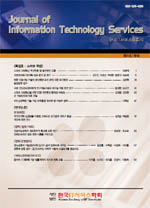- 영문명
- Bayesian Neural Network Approach for Reliable Autonomous Decision-Making in AI Weapon Systems
- 발행기관
- 한국IT서비스학회
- 저자명
- 남은범(Eunbeom Nam) 김세용(Seyong Kim) 이기택(Gitaek Lee)
- 간행물 정보
- 『한국IT서비스학회지』제24권 제5호, 45~55쪽, 전체 11쪽
- 주제분류
- 경제경영 > 경영학
- 파일형태
- 발행일자
- 2025.10.30
4,120원
구매일시로부터 72시간 이내에 다운로드 가능합니다.
이 학술논문 정보는 (주)교보문고와 각 발행기관 사이에 저작물 이용 계약이 체결된 것으로, 교보문고를 통해 제공되고 있습니다.

국문 초록
Recent advances in artificial intelligence (AI) have rapidly transformed the landscape of modern warfare, with AI-enabled weapon systems offering unprecedented improvements in target recognition, operational speed, and autonomous mission execution. However, despite these benefits, the reliability of autonomous decision-making remains a major concern, particularly in certain environments where incorrect predictions can result in unintended engagements or civilian casualties. Addressing this issue requires a means to not only improve prediction accuracy but quantify the uncertainty behind each decision.
This study proposes a novel methodology for evaluating and enhancing the reliability of autonomous decisions in AI weapon systems by leveraging the framework of Bayesian Neural Networks(BNNs). Recognizing the computational limitations of applying BNNs to an entire deep learning model, a Partially Bayesian Neural Network (PBNN) architecture is introduced. This design enables the system to estimate the uncertainty of its own outputs while maintaining real-time performance—an essential requirement in military applications.
Furthermore, a semi-autonomous control structure is implemented, in which human intervention is selectively triggered based on the estimated uncertainty. The results show that the proposed method produces significantly lower output variance and higher confidence scores when predictions are correct, while consistently identifying high-uncertainty cases associated with incorrect predictions. This allows the system to distinguish between reliable and unreliable decisions in real time.
The proposed approach offers a technically viable pathway toward balancing autonomy and human oversight in AI weapon systems. It also serves as a foundational framework for the future implementation of Manned-Unmanned Teaming (MUM-T).
영문 초록
목차
1. 서론
2. 이론적 배경
3. 제안 방법론
4. 실험
5. 결론
참고문헌
해당간행물 수록 논문
- 파격적인 직원 중심 조직문화와 중소기업 성장의 선순환 구조: ㈜세계로시스템 사례 분석
- 지속가능한 제품개발을 위한 PDP-LCA 통합 PLM 시스템 워크플로우 및 아키텍처 개발
- AI 무기체계의 자율 판단 신뢰도 향상을 위한 베이지안 신경망 적용 방법론
- 생성AI와 귀납적 기계학습에 기반한 유명인 향수 탐색 사례연구: 성공 및 실패 요인의 도출과 가설의 생성
- 딥러닝 기반 항공안전관리시스템 예측모델 개발
- IT 기업의 현금보유에 대한 연구
- 텍스트마이닝 분석기법을 활용한 AI 기반 금융서비스에 관한 특성요인 분석 연구
- 의료 마이데이터 정보주체 참여 활성화 방안 제안
- 대학실험실 수준의 연구보안 서비스 설계 연구
- AI 시대 경력개발 연구동향과 전략: 텍스트 마이닝과 체계적 문헌고찰
참고문헌
교보eBook 첫 방문을 환영 합니다!

신규가입 혜택 지급이 완료 되었습니다.
바로 사용 가능한 교보e캐시 1,000원 (유효기간 7일)
지금 바로 교보eBook의 다양한 콘텐츠를 이용해 보세요!



